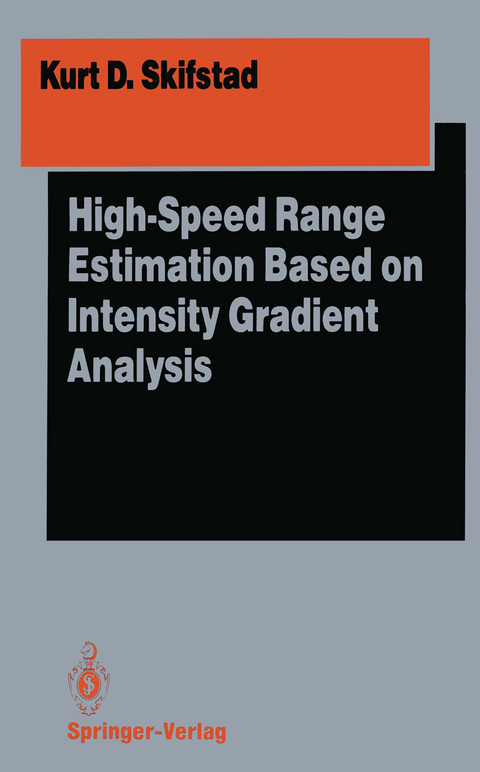
High-Speed Range Estimation Based on Intensity Gradient Analysis
Springer-Verlag New York Inc.
978-1-4612-7801-6 (ISBN)
A fast and reasonably accurate perception of the environment is essential for successful navigation of an autonomous agent. Although many modes of sensing are applicable to this task and have been used, vision remains the most appealing due to its passive nature, good range, and resolution. Most vision techniques to recover depth for navigation use stereo. In the last few years, researchers have started studying techniques to combine stereo with the motion of the camera. Skifstad's dissertation proposes a new approach to recover depth information using known camera motion. This approach results in a robust technique for fast estimation of distances to objects in an image using only one translating camera. A very interesting aspect of the approach pursued by Skifstad is the method used to bypass the most difficult and computationally expensive step in using stereo or similar approaches for the vision-based depth esti mation. The correspondence problem has been the focus of research in most stereo approaches. Skifstad trades the correspondence problem for the known translational motion by using the fact that it is easier to detect single pixel disparities in a sequence of images rather than arbitrary disparities after two frames. A very attractive feature of this approach is that the computations required to detect single pixel disparities are local and hence can be easily parallelized. Another useful feature of the approach, particularly in naviga tion applications, is that the closer objects are detected earlier.
1 Introduction.- 1.1 Purpose.- 1.2 Philosophy.- 1.3 The Structure of This Thesis.- 2 Approaches to the Depth Recovery Problem.- 2.1 Sensing Modalities.- 2.2 Vision as a Primary Mode of Sensing.- 2.3 Literature Survey.- 2.4 Summary.- 3 Depth Recovery.- 3.1 Depth Recovery Using Translational Sensor Motion.- 3.2 Special Case: Axial Camera Motion.- 3.3 Special Case: Lateral Camera Motion.- 3.4 The Parameters Needed for Depth Recovery.- 4 Theoretical Basis for IGA.- 4.1 Acquiring a Sequence of Images.- 4.2 Two Ideas and Their Implications.- 5 Intensity Gradient Analysis.- 5.1 Isolating Fixed Image Displacements Using Intensity Gradients.- 5.2 Why Do More Work?.- 5.3 Extending to Two Dimensions.- 5.4 The IGA Algorithm.- 6 Implementation Issues.- 6.1 Problems with Real-World Sensors.- 6.2 Uncertainty in the Camera Motion Parameters.- 6.3 Moving Objects.- 6.4 Summary.- 7 Fixed Disparity Surfaces.- 7.1 Examples of FDS’s.- 7.2 Interpreting FDS’s.- 7.3 Fixed Disparity Surfaces and Conventional Stereo.- 8 Experiments.- 8.1 Experimental Setup.- 8.2 Calibration Procedures.- 8.4 Outdoor Scenes.- 8.5 Conclusions.- 9 An Application: Vision-Guided Navigation Using IGA.- 9.1 Navigation.- 9.2 Experimental Setup.- 9.3 Experiments.- 10 Conclusion.- 10.1 Future Research.- 10.2 Contribution.
| Reihe/Serie | Springer Series in Perception Engineering |
|---|---|
| Zusatzinfo | X, 182 p. |
| Verlagsort | New York, NY |
| Sprache | englisch |
| Maße | 155 x 235 mm |
| Themenwelt | Informatik ► Grafik / Design ► Digitale Bildverarbeitung |
| Informatik ► Theorie / Studium ► Algorithmen | |
| Informatik ► Theorie / Studium ► Künstliche Intelligenz / Robotik | |
| Mathematik / Informatik ► Mathematik ► Wahrscheinlichkeit / Kombinatorik | |
| Technik ► Elektrotechnik / Energietechnik | |
| Schlagworte | high-speed range estimation • intensity gradient analysis • Machine vision |
| ISBN-10 | 1-4612-7801-5 / 1461278015 |
| ISBN-13 | 978-1-4612-7801-6 / 9781461278016 |
| Zustand | Neuware |
| Haben Sie eine Frage zum Produkt? |
aus dem Bereich


